Boat lift guide posts are essential components of boat lift systems, providing stability and alignment for boats during lifting and lowering. They ensure safe and efficient operation, protecting both the boat and the lift from damage. These posts are typically installed on either side of the lift, guiding the boat into the correct position. Properly functioning guide posts are crucial for maintaining the longevity of the boat lift system and ensuring the boat is secure during various water conditions. Understanding their role and importance is key to maximizing the effectiveness of your boat lift setup.
What Are Boat Lift Guide Posts?
Boat lift guide posts are vertical structures installed alongside boat lifts to assist in aligning and stabilizing boats during the lifting process. Made from durable materials like aluminum or steel, they are designed to withstand harsh marine environments. These posts often feature adjustable brackets or rollers to guide the boat smoothly into position, reducing the risk of damage to both the boat and the lift. Guide posts are typically placed on either side of the lift, providing a clear path for the boat to enter and exit. Their height and design can vary depending on the type of boat lift and water conditions, ensuring versatility and reliability in operation.
Importance of Guide Posts in Boat Lift Systems
Guide posts play a critical role in boat lift systems by ensuring safe and efficient boat handling. They prevent boats from drifting or colliding with the lift structure, minimizing potential damage. Guide posts also reduce wear and tear on the lift mechanism by maintaining proper alignment during operation. Additionally, they enhance user confidence by providing a clear and stable path for docking and launching. In varying water conditions, such as strong currents or tidal changes, guide posts add an extra layer of stability, making them indispensable for both small and large watercraft. Their presence contributes to the overall durability and performance of the boat lift system, ensuring a smooth and secure experience for boat owners.
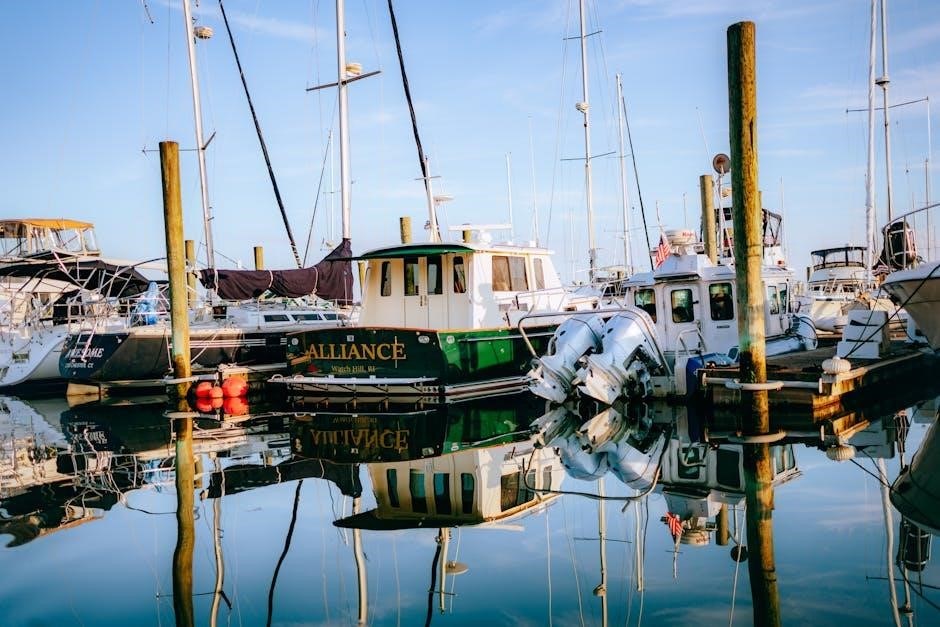
Choosing the Right Boat Lift for Your Needs
Selecting the appropriate boat lift requires careful consideration of water depth, dock size, and tidal patterns. Assessing these factors ensures compatibility and optimal performance for your specific setup.
Factors to Consider When Selecting a Boat Lift
When selecting a boat lift, several factors must be considered to ensure optimal performance and durability. First, assess the water depth at your dock, as lifts vary in their capacity to handle shallow or deep waters. Next, evaluate the size and weight of your boat to choose a lift that can safely support it. Additionally, consider the tidal patterns in your area, as fluctuating water levels can affect the lift’s functionality. The material and construction of the lift are also crucial, with options ranging from aluminum to galvanized steel, each offering different strengths. Finally, think about ease of installation, maintenance requirements, and budget constraints to make an informed decision.
Water Depth, Dock Size, and Tide Considerations
Water depth, dock size, and tidal fluctuations are critical factors when installing boat lift guide posts. The depth of the water determines the type of lift and guide posts required, as shallow water may need specialized systems. Dock size must accommodate both the boat and the lift, ensuring proper alignment and clearance. Tides can significantly impact the functionality of the lift, so guide posts should be adjustable to handle varying water levels. Measuring these elements accurately ensures the lift operates efficiently and safely. Proper consideration of these factors prevents damage to the boat, dock, and lift system, ensuring longevity and reliable performance in different water conditions.
Installation of Boat Lift Guide Posts
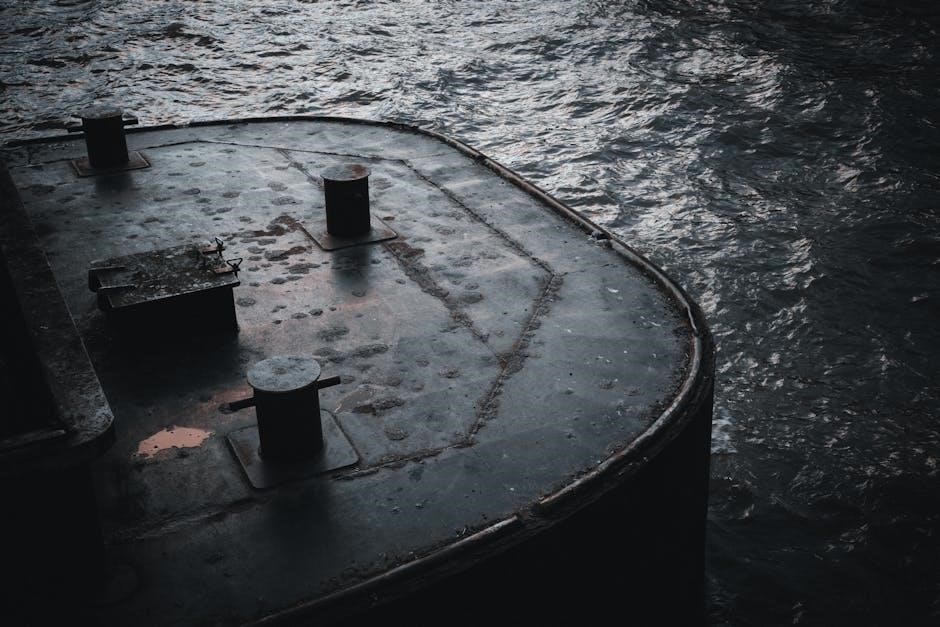
Installing boat lift guide posts requires careful site assessment, proper tools, and precise alignment to ensure stability and functionality. Drilling and securing posts firmly is essential for safe operation.
Step-by-Step Guide to Installing Guide Posts
Installing boat lift guide posts involves several key steps to ensure proper alignment and functionality. First, assess the site to determine the optimal position for the posts, considering water depth and dock size. Next, measure and mark the dock where the posts will be installed, ensuring they are evenly spaced and aligned with the lift. Drill pilot holes for the posts and secure them using sturdy hardware. Adjust the posts to ensure they are vertical and level. Finally, test the system by lifting a boat to confirm the posts guide it smoothly. Proper installation ensures safe and efficient operation of the boat lift system.
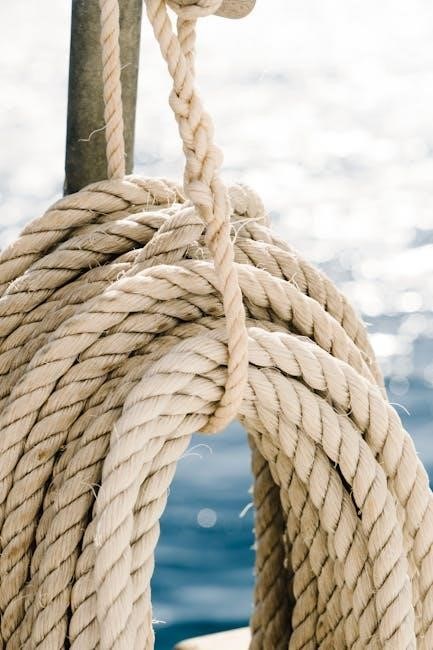
Tools and Materials Required for Installation
Installing boat lift guide posts requires specific tools and materials to ensure a secure and proper setup. Essential tools include a drill, level, measuring tape, wrench, and screwdrivers. Materials needed are galvanized steel posts, mounting brackets, bolts, nuts, and washers. Concrete footings may be necessary for stability in soft ground. Safety gear like gloves and goggles is also recommended. Additionally, marine-grade hardware is crucial to withstand water conditions. Proper tools and materials ensure a durable and reliable installation, preventing future issues. Always refer to the manufacturer’s specifications for recommended equipment and supplies.
Maintenance and Upkeep of Boat Lift Guide Posts
Regular inspections, cleaning, and lubrication of guide posts are crucial for optimal performance. Addressing wear and tear promptly ensures longevity and reliability of the boat lift system.
Regular Maintenance Tips for Longevity
Regular maintenance is vital to ensure the longevity of boat lift guide posts. Start with frequent inspections to identify signs of wear, rust, or damage. Clean debris and marine growth regularly, as they can interfere with the smooth operation of the posts. Lubricate moving parts to reduce friction and prevent corrosion. Check the alignment of the guide posts to ensure proper boat positioning. Replace any worn-out components promptly to avoid further damage. Protect the posts from environmental factors like saltwater and UV exposure by applying appropriate coatings. Schedule professional inspections annually to address any issues before they escalate. By following these tips, you can extend the lifespan of your boat lift guide posts and maintain their reliability. Regular upkeep ensures safe and efficient boat lifting operations. Always prioritize proactive maintenance to avoid costly repairs.
Common Issues and Solutions
Common issues with boat lift guide posts include misalignment, corrosion, and damage from debris. To address misalignment, adjust the posts seasonally or after extreme weather. Corrosion can be prevented by applying marine-grade coatings and regular inspections. Damage from debris can be minimized by installing protective covers or sleeves. Another issue is wear on moving parts, which can be resolved by lubricating hinges and pivot points. If posts become bent, they should be replaced immediately to prevent further damage. Addressing these issues promptly ensures the guide posts remain functional and reliable. Regular inspections and timely repairs are essential to prevent costly replacements. By staying proactive, you can maintain the integrity of your boat lift system and ensure smooth operations. Proper care extends the lifespan of your guide posts and enhances overall safety.
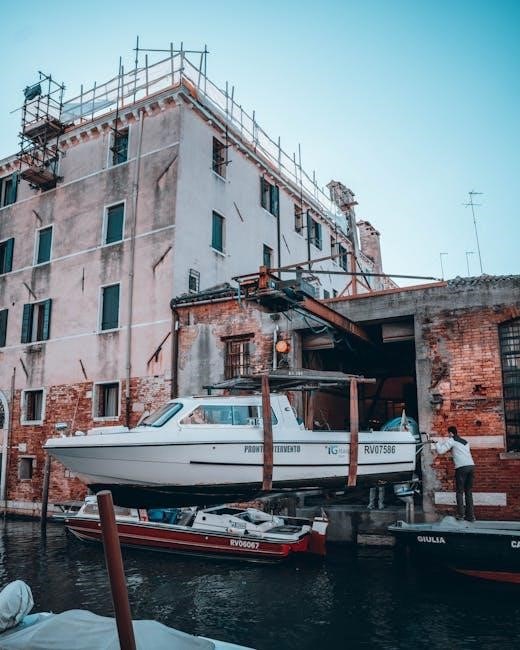
Safety Considerations and Best Practices
Always inspect guide posts for damage or wear before use. Ensure proper training on boat lift operation and adhere to weight capacity guidelines. Lower and raise boats slowly to avoid accidents. Keep the area clear of obstacles and ensure secure docking. Regular maintenance and inspections are crucial for safe functionality. Follow manufacturer guidelines and local regulations to ensure optimal safety and system longevity. Proper safety practices protect both the boat and the lift system, ensuring reliable performance and preventing potential hazards. Stay vigilant and proactive to maintain a safe boating environment.
Safety Tips for Using Boat Lift Guide Posts
Always inspect guide posts for damage or wear before use to ensure stability. Properly train all users on boat lift operation to prevent accidents. Adhere to weight capacity guidelines to avoid overloading. Use caution when raising or lowering the boat, as sudden movements can cause instability. Ensure the area around the lift is clear of obstacles. Regularly check water conditions and weather forecasts to avoid operating in unsafe environments. Keep emergency equipment nearby, such as life jackets and fire extinguishers. Avoid operating the lift in low visibility or rough water conditions. Never leave the boat unattended while it is on the lift. Ensure all bolts and fasteners are securely tightened. Follow manufacturer recommendations for maintenance and repairs. Stay alert and vigilant during operation to ensure a safe experience.

Common Mistakes to Avoid
One common mistake is improper alignment of the guide posts, which can cause misalignment of the boat and potential damage. Another error is neglecting regular inspections, leading to unnoticed wear and tear. Many users overlook water depth and tide fluctuations, resulting in inefficient lift operation. Using incorrect materials for guide posts can compromise durability. Failing to follow manufacturer guidelines for installation and maintenance is a frequent oversight. Additionally, some users attempt DIY installations without professional assistance, risking structural integrity. Ignoring safety protocols, such as exceeding weight limits, can lead to accidents. Proper training and adherence to best practices are essential to avoid these pitfalls and ensure optimal performance of your boat lift system.
Boat lift guide posts remain a crucial element in modern boating, with advancements in materials and technology promising enhanced durability and efficiency for future systems.
Evolution of Boat Lift Technology
Boat lift technology has advanced significantly over the years, driven by innovations in materials and design. Early systems were often cumbersome and limited in capacity, but modern lifts now feature sleek, durable constructions that can handle larger and heavier boats. The integration of automation and smart technology has also transformed the industry, allowing for easier operation and maintenance. Guide posts, in particular, have evolved to include adjustable and corrosion-resistant models, enhancing both functionality and longevity. These advancements ensure that boat lifts meet the growing demands of boat owners while providing reliable performance in various water conditions. Continued innovation promises even better solutions for the future.
Future Innovations in Guide Post Design
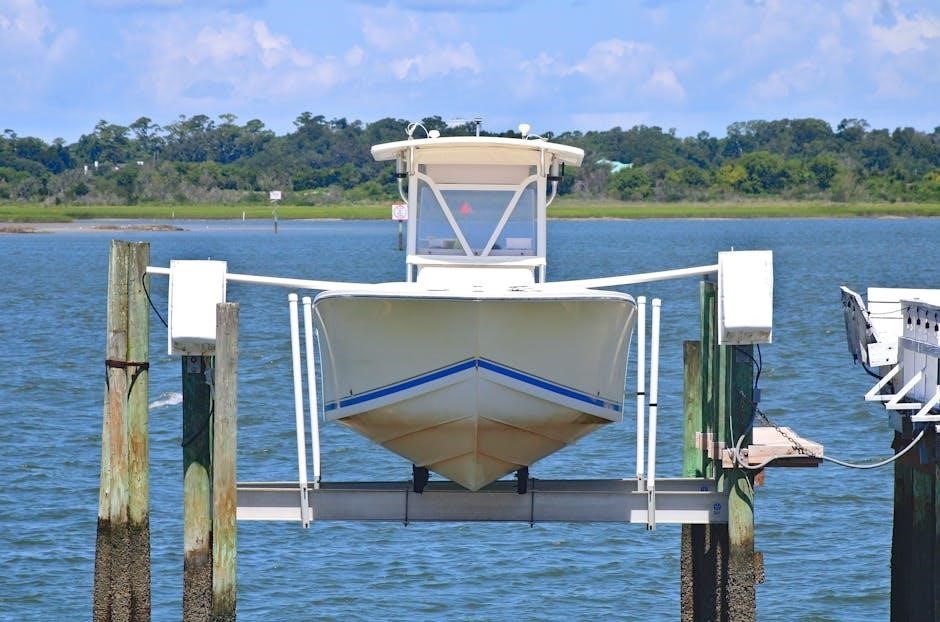
Future innovations in guide post design are expected to focus on enhanced durability, smarter materials, and improved functionality. Manufacturers are exploring the use of advanced composites and corrosion-resistant coatings to extend lifespan. Automation and sensor integration could enable guide posts to adjust dynamically, ensuring optimal alignment in varying water conditions. Additionally, eco-friendly materials and energy-efficient designs are likely to gain prominence, aligning with sustainability trends. Modular and customizable guide post systems may also emerge, offering tailored solutions for different boat sizes and dock configurations. These advancements aim to simplify maintenance, improve safety, and provide seamless operation for boat lift users. The integration of technology and innovative materials will shape the next generation of guide post systems.
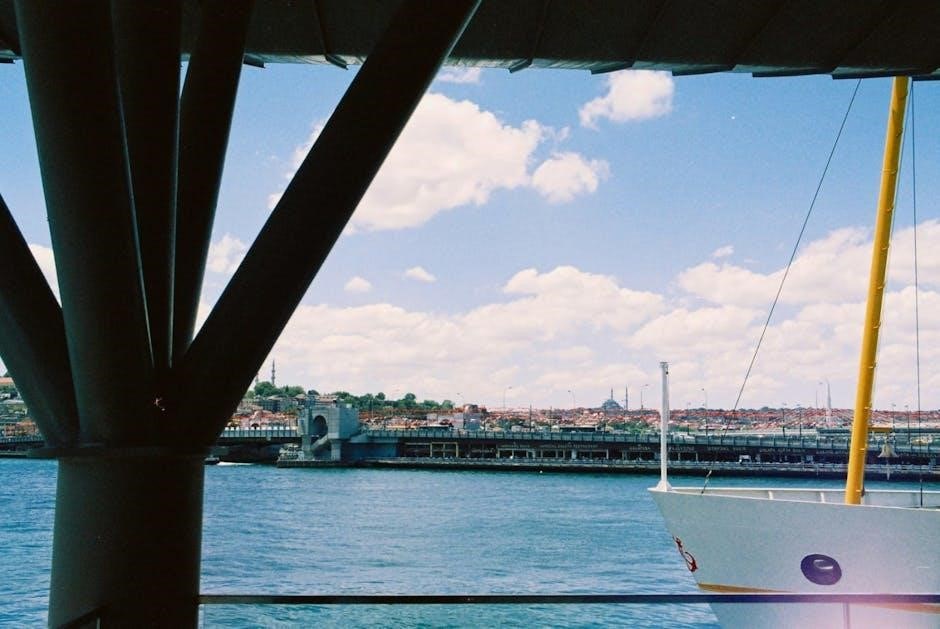
Leave a Reply